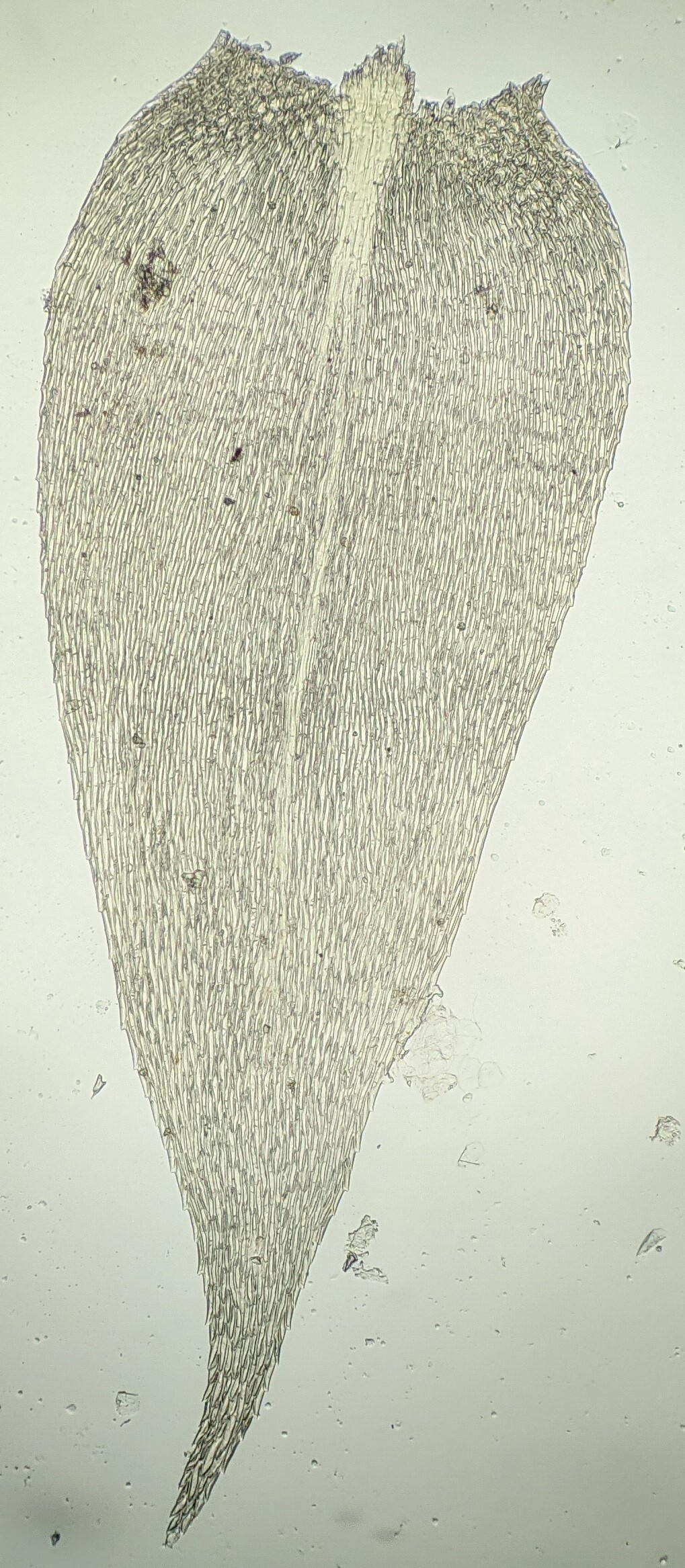Sciuro-hypnum
Autoicous or rarely dioicous (not in Victoria). Asexual propagules absent. Mats or tufts on soil or rock. Stems creeping to ascending, irregularly or regularly pinnately (not in Victoria) branched, with straight or curved branches, with scattered fascicles of rhizoids; paraphyllia absent; central strand present. Stem and branch leaves differentiated, erect to erect-spreading or wide-spreading and squarrose (not in Victoria) when moist, scarcely altered, more erect or occasionally twisted (not in Victoria) when dry, imbricate, arranged around stem and facing all directions, homomallous or rarely complanate (not in Victoria), not or only slightly plicate, short- to long-decurrent; alar cells differentiated, quadrate to rectangular, occasionally inflated (not in Victoria), forming an ovate or triangular group, sometimes extending apically along margin or extending to the costa. Stem leaves ovate or ovate-triangular to lanceolate; apex acute, acuminate or occasionally obtuse and apiculate (not in Victoria); costa extending to midleaf to percurrent, sometimes ending in a spine, but usually not; margin entire to serrate, plane or sometimes recurved toward base; laminal cells linear, shorter at base, smooth; Branch leaves smaller than stem leaves, ovate-lanceolate to lanceolate; apex rounded, obtuse, acute or acuminate; costa extending to midleaf to percurrent, more frequently ending in a spine; margins usually serrate, plane or recurved near base; laminal cells linear, shorter at base, smooth or occasionally prorate (not in Victoria). Seta rough, very rarely smooth (not in Victoria). Capsule inclined to pendent or rarely erect (not in Victoria), straight (not in Victoria) or curved, ovoid or obloid, with an annulus. Calyptra cucullate, smooth, glabrous. Operculum conic or rarely rostellate. Peristome double; endostome segments similar height as exostome, with a high basal membrane; cilia present.
Around 30 species, mostly from boreal and temperate regions of the Northern Hemisphere, but with two species in southern temperate regions, subantarctic islands and high to mid-altitude in tropical regions (Ignatov 2014); one species in Victoria.
Sciuro-hypnum comprises a group of species that have been included in Brachythecium and recognised as sections Plumosa and Reflexa (Ignatov & Milyutina 2007; Ignatov 2014). Sciuro-hypnum form a group in chloroplast and nuclear DNA phylogenies that is probably not the closest related genus to Brachythecium (Draper & Hedenäs 2009; Li et al. 2014). Sciuro-hypnum can generally be distinguished from Brachythecium by the combination of small overall size, autoicous sexuality, non-plicate leaves and rough seta (Ignatov & Huttunen 2002; Ignatov & Milyutina 2007).
 Spinning
SpinningDraper, I.; Hedenäs, L. (2009). Circumscription of European taxa within the Sciuro-hypnum reflexum complex (Brachytheciaceae, Bryophyta), based on molecular and morphological data. Taxon 58: 572–584.
Ignatov, M.S. (2014). Brachytheciaceae, in Flora of North America Editorial Committee (eds), Flora of North America, vol. 28, pp. 404–468. Oxford University Press, New York.
Ignatov, M.S.; Huttunen, S. (2002). Brachytheciaceae (Bryophyta) – a family of sibling genera. Arctoa 11: 245–296.
Ignatov, M.S.; Milyutina, I.A. (2007). A revision of the genus Sciuro-hypnum (Brachytheciaceae, Bryophyta) in Russia . Arctoa 16: 63–86.
Li, M.; Zuo, Q.; Ignatov, M.S.; Huttunen, S.; He, S.; Wang, Y.-F. (2014). Phylogenetic position of the genus Bryhnia Kaurin (Brachytheciaceae, Bryophyta) inferred from chloroplast (rpl16, trnG, trnL-F) and nuclear (ITS) sequence data. Journal of Bryology 36: 15–21.
